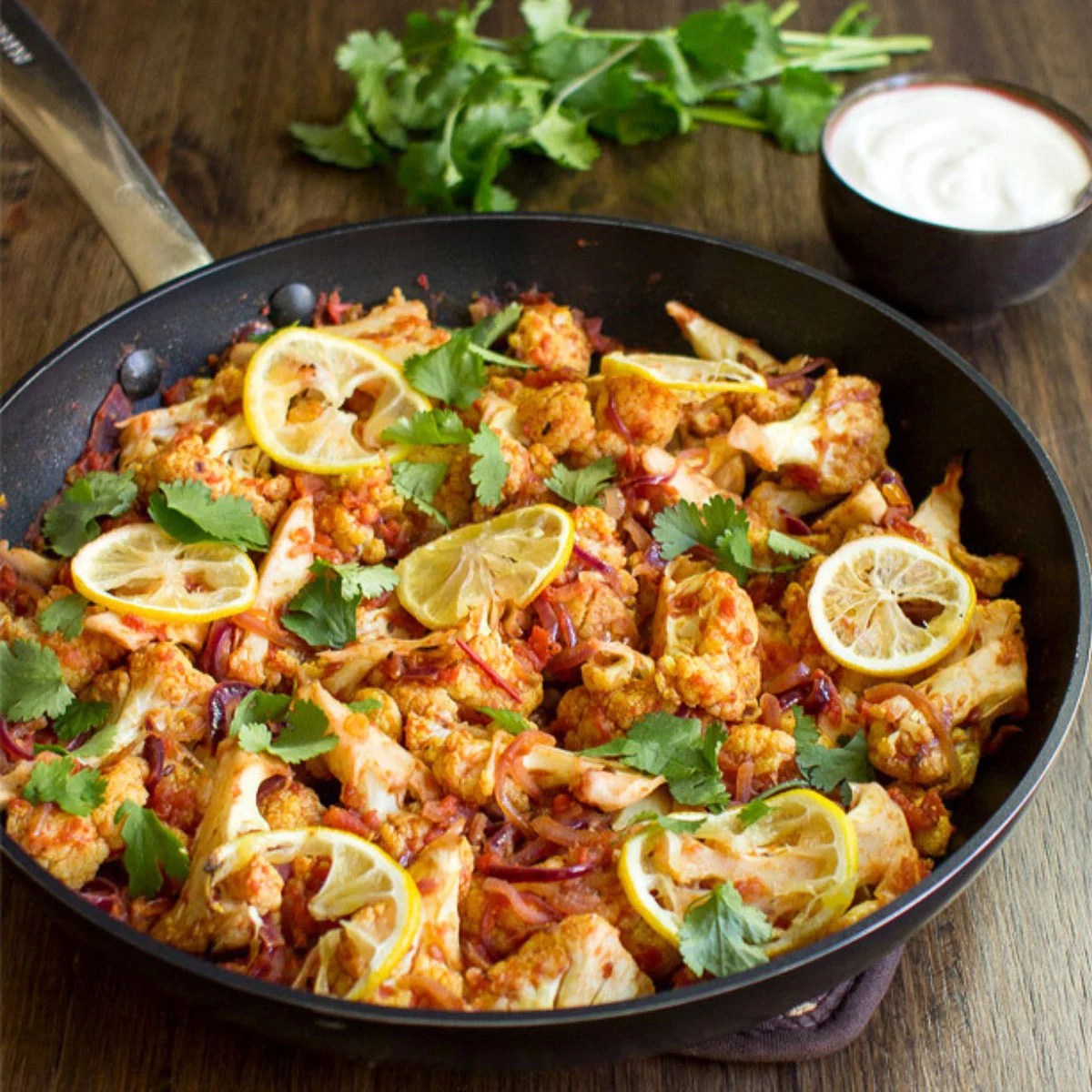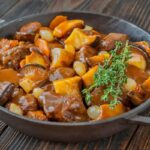Embark on a culinary journey through vibrant India, where fragrant spices dance with fresh vegetables and lean proteins in a delightful flexitarian feast. Discover the magic of Indian cooking adapted for a flexible, healthy lifestyle. This collection of recipes caters to those seeking delicious, adaptable meals that effortlessly balance flavor and well-being, offering a diverse range of options to suit every palate and dietary preference. Whether you’re a seasoned chef or a kitchen novice, these recipes are designed to be accessible and enjoyable, guiding you step-by-step towards creating unforgettable Indian dinners.
From quick weeknight wonders ready in under 30 minutes to more elaborate vegetarian and flexitarian dishes showcasing the rich tapestry of North and South Indian flavors, this guide provides a comprehensive exploration of Indian cuisine’s versatility. Learn to incorporate lean proteins like chicken and fish seamlessly, enhancing the nutritional profile of your meals while maintaining the authentic taste of India. We’ll also explore creative serving suggestions and dietary adaptations, ensuring that everyone at your table can enjoy these flavorful and wholesome creations.
Introduction to Flavorful Indian Flexitarian Dinner Recipes
Imagine a dinner table laden with vibrant colors and intoxicating aromas: the deep crimson of a tomato-based curry clinging to tender paneer, the emerald green of spinach mingling with fragrant spices in a saag, the sunny yellow of lentils simmered with turmeric and ginger. This is the allure of flexitarian Indian cuisine, a culinary journey that celebrates the rich tapestry of Indian flavors while embracing a flexible approach to meat consumption. It’s a delicious and satisfying way to enjoy the best of both worlds – the hearty satisfaction of traditional Indian dishes with the health benefits of a plant-forward diet.
The appeal of flexitarian Indian cooking for dinner lies in its versatility and adaptability. It seamlessly blends the bold spices and aromatic herbs characteristic of Indian cuisine with the nutritional advantages of a diet that emphasizes plant-based foods. This approach offers a delightful balance – the rich textures and satisfying flavors of meat dishes are complemented by the lightness and freshness of vegetarian options, creating a diverse and exciting culinary experience. The incorporation of legumes, lentils, and vegetables provides a wealth of fiber, vitamins, and minerals, contributing to a healthier and more balanced diet.
Health Benefits of a Flexitarian Diet
A flexitarian diet, characterized by predominantly plant-based meals with occasional inclusion of meat, offers numerous health advantages. Increased fiber intake from fruits, vegetables, and legumes promotes healthy digestion and helps regulate blood sugar levels. The abundance of antioxidants found in colorful Indian spices and vegetables helps combat oxidative stress and reduce the risk of chronic diseases. Furthermore, a flexitarian approach often leads to a lower intake of saturated fats and cholesterol, contributing to improved cardiovascular health. For example, substituting a lentil-based curry for a heavy meat-based dish several times a week can significantly reduce daily saturated fat intake.
Reasons for Choosing Flexitarian Meals
Many individuals embrace flexitarian eating for a variety of compelling reasons. Firstly, it’s a gentle and sustainable way to reduce meat consumption, aligning with environmental concerns about the impact of livestock farming. Secondly, it allows for greater culinary exploration, opening up a world of delicious vegetarian and vegan Indian recipes that are often overlooked in a purely meat-centric diet. Imagine the vibrant colors of a mixed vegetable biryani, the creamy texture of a chana masala, or the satisfying bite of a vegetable pakora. Finally, the health benefits of a flexitarian diet are a strong motivator. The improved digestion, increased energy levels, and reduced risk of chronic diseases are tangible rewards that encourage long-term adherence to this flexible and fulfilling eating style.
Quick & Easy Flexitarian Indian Dinner Recipes (Under 30 minutes)
Craving a flavorful Indian meal but short on time? These quick and easy recipes, clocking in under 30 minutes from prep to plate, are perfect for busy weeknights. Each recipe offers a delicious balance of vegetarian and non-vegetarian options, allowing for easy customization to your dietary preferences. The vibrant colors and aromatic spices will transport your taste buds to the heart of India, without sacrificing precious time.
These recipes are designed for maximum flavor and minimal effort. Simple techniques and readily available ingredients ensure a satisfying meal even on the busiest of days. The flexibility built into each recipe allows for personalized adjustments, catering to individual tastes and dietary needs.
Three Quick Flexitarian Indian Dinner Recipes
Below are three recipes, each taking under 30 minutes to prepare and cook. These recipes showcase the versatility of Indian cuisine, easily adapting to include or exclude meat depending on your preference.
- One-Pan Chickpea and Spinach Curry:
- Ingredients: 1 tbsp olive oil, 1 onion (chopped), 2 cloves garlic (minced), 1 inch ginger (grated), 1 can (15oz) chickpeas (drained and rinsed), 5 oz fresh spinach, 1 can (14.5oz) diced tomatoes, 1 tsp garam masala, ½ tsp turmeric, ½ tsp cumin, salt and pepper to taste, optional: ½ cup paneer (Indian cheese) cubed.
- Steps: Heat oil in a pan. Sauté onion, garlic, and ginger until softened. Add chickpeas, spinach, tomatoes, garam masala, turmeric, and cumin. Simmer for 15 minutes, stirring occasionally. Season with salt and pepper. Stir in paneer during the last 5 minutes if using.
- Quick Lentil and Vegetable Curry:
- Ingredients: 1 tbsp coconut oil, 1 onion (chopped), 1 carrot (chopped), 1 cup red lentils (rinsed), 1 can (14.5oz) coconut milk, 1 cup vegetable broth, 1 tsp curry powder, ½ tsp turmeric, salt to taste, optional: 1 cup cooked chicken or shrimp.
- Steps: Heat oil in a pan. Sauté onion and carrot until softened. Add lentils, coconut milk, vegetable broth, curry powder, and turmeric. Bring to a boil, then reduce heat and simmer for 15-20 minutes, or until lentils are tender. Season with salt. Stir in cooked chicken or shrimp during the last 5 minutes if using.
- Speedy Vegetable Biryani:
- Ingredients: 1 tbsp ghee (clarified butter), 1 cup basmati rice (cooked according to package directions), 1 cup mixed vegetables (peas, carrots, cauliflower), ½ cup chopped cilantro, ½ tsp biryani masala, salt to taste, optional: ½ cup cooked lamb or chicken.
- Steps: Heat ghee in a pan. Add mixed vegetables and sauté for 5 minutes. Add cooked rice, biryani masala, and salt. Mix well. Stir in cilantro. Gently fold in cooked lamb or chicken if using. Serve hot.
Recipe Summary Table
This table provides a quick overview of the preparation and cooking times for each recipe, along with a list of key ingredients.
| Dish Name | Prep Time (minutes) | Cook Time (minutes) | Ingredients |
|---|---|---|---|
| One-Pan Chickpea and Spinach Curry | 10 | 15 | Olive oil, onion, garlic, ginger, chickpeas, spinach, diced tomatoes, garam masala, turmeric, cumin, salt, pepper, optional paneer |
| Quick Lentil and Vegetable Curry | 10 | 20 | Coconut oil, onion, carrot, red lentils, coconut milk, vegetable broth, curry powder, turmeric, salt, optional chicken or shrimp |
| Speedy Vegetable Biryani | 5 | 10 | Ghee, basmati rice, mixed vegetables, cilantro, biryani masala, salt, optional lamb or chicken |
Recipe Versatility
These recipes are incredibly versatile and can be easily adapted to suit individual preferences and dietary restrictions. For example, you can:
- Substitute proteins: Swap chicken for lamb, tofu, or even jackfruit in the biryani and lentil curry. Add different types of beans to the chickpea curry for added texture and flavor.
- Adjust spice levels: Reduce or increase the amount of chili powder or other spices to control the heat. Add a pinch of cayenne pepper for an extra kick.
- Add more vegetables: Incorporate other vegetables like potatoes, green beans, or bell peppers to enhance the nutritional value and flavor profile of the dishes.
- Change the base: Experiment with different types of lentils or rice. Use brown rice instead of basmati for a nuttier flavor in the biryani.
Serving Suggestions and Variations for Flavorful Indian Flexitarian Dinners

Elevating your Indian flexitarian dinner experience goes beyond the main course; thoughtfully chosen accompaniments and adaptable recipes unlock a world of flavor and dietary flexibility. The right side dishes can enhance the overall dining experience, while recipe modifications cater to diverse needs and preferences.
Complementary Side Dishes
A well-rounded Indian meal often includes a variety of textures and tastes. Pairing your main course with the right side dishes balances the richness and spice levels, creating a harmonious culinary symphony.
Consider these options:
- Fluffy Basmati Rice: Its delicate aroma and light texture provide a neutral backdrop for richly spiced curries. Imagine the grains glistening, each one perfectly cooked, absorbing the fragrant steam from a simmering lentil dish.
- Soft Naan Bread: This leavened flatbread, baked in a tandoor oven or a skillet, offers a delightful contrast in texture, acting as a perfect scoop for flavorful sauces and curries. Picture the slightly charred edges and pillowy soft interior, ideal for dipping and soaking up every last drop.
- Cooling Raita: A yogurt-based condiment, often featuring cucumbers, mint, or spices, raita provides a refreshing counterpoint to the richness of the main course. Visualize the creamy, cool yogurt punctuated by vibrant green herbs and crunchy cucumber pieces.
- Saag Paneer (for non-vegetarian option): If you’re incorporating paneer (Indian cheese), this spinach-based curry provides a delicious vegetarian alternative.
Dietary Adaptations and Recipe Modifications
Adapting recipes to suit different dietary needs is straightforward with a little creativity. Many traditional Indian dishes can easily be made gluten-free, vegan, or to accommodate other preferences.
Here are some practical strategies:
- Gluten-Free Options: Replace wheat-based flour with gluten-free alternatives like rice flour, almond flour, or chickpea flour in recipes calling for thickening agents or breading. Choose gluten-free naan or roti as alternatives.
- Vegan Adaptations: Substitute dairy products like yogurt and paneer with plant-based alternatives such as coconut yogurt, silken tofu, or vegan cheese. Ensure that any sauces do not contain honey or ghee (clarified butter).
- Spice Level Adjustments: Modify the amount of chili powder or other spices to suit your preferred level of heat. Start with a smaller quantity and gradually increase to your liking.
Recipe Variations and Side Dish Pairings
The following table illustrates various recipe options and suitable side dishes, along with dietary adaptations:
| Recipe | Side Dish Suggestion 1 | Side Dish Suggestion 2 | Dietary Adaptation |
|---|---|---|---|
| Lentil Curry (Dal Makhani) | Basmati Rice | Naan Bread | Vegan (use coconut milk) |
| Vegetable Biryani | Raita (cucumber mint) | Salad (mixed greens with lemon vinaigrette) | Gluten-Free (use gluten-free rice) |
| Chana Masala (Chickpea Curry) | Brown Rice | Plain Roti | Vegan (as is) |
| Aloo Gobi (Potato and Cauliflower Curry) | Jeera Rice (cumin rice) | Paratha (layered flatbread) | Gluten-Free (use gluten-free flour for paratha) |
This culinary adventure through Flavorful Indian Flexitarian Recipes for Dinner has showcased the incredible versatility and deliciousness of Indian cuisine adapted for a modern, health-conscious lifestyle. The vibrant colors, aromatic spices, and balanced flavors create a dining experience that is both satisfying and nourishing. Whether you choose quick weeknight meals or more elaborate weekend feasts, these recipes offer a gateway to exploring the diverse culinary landscape of India while prioritizing your well-being. So, gather your ingredients, embrace the vibrant flavors, and embark on a delicious journey of culinary discovery.
Frequently Asked Questions
Can I make these recipes completely vegan?
Many recipes can be adapted for vegan diets by substituting dairy products with plant-based alternatives and omitting any meat or fish. Specific substitutions will be noted within the recipes.
How can I store leftovers?
Leftovers can be stored in airtight containers in the refrigerator for up to 3 days. Reheat gently before serving.
Are these recipes suitable for meal prepping?
Yes, many of these recipes are ideal for meal prepping. Prepare larger batches and store them in the refrigerator for quick and easy weeknight meals.
What level of cooking experience is required?
These recipes range in complexity, from beginner-friendly quick meals to slightly more advanced dishes. Clear instructions are provided for all recipes to ensure success for all skill levels.


